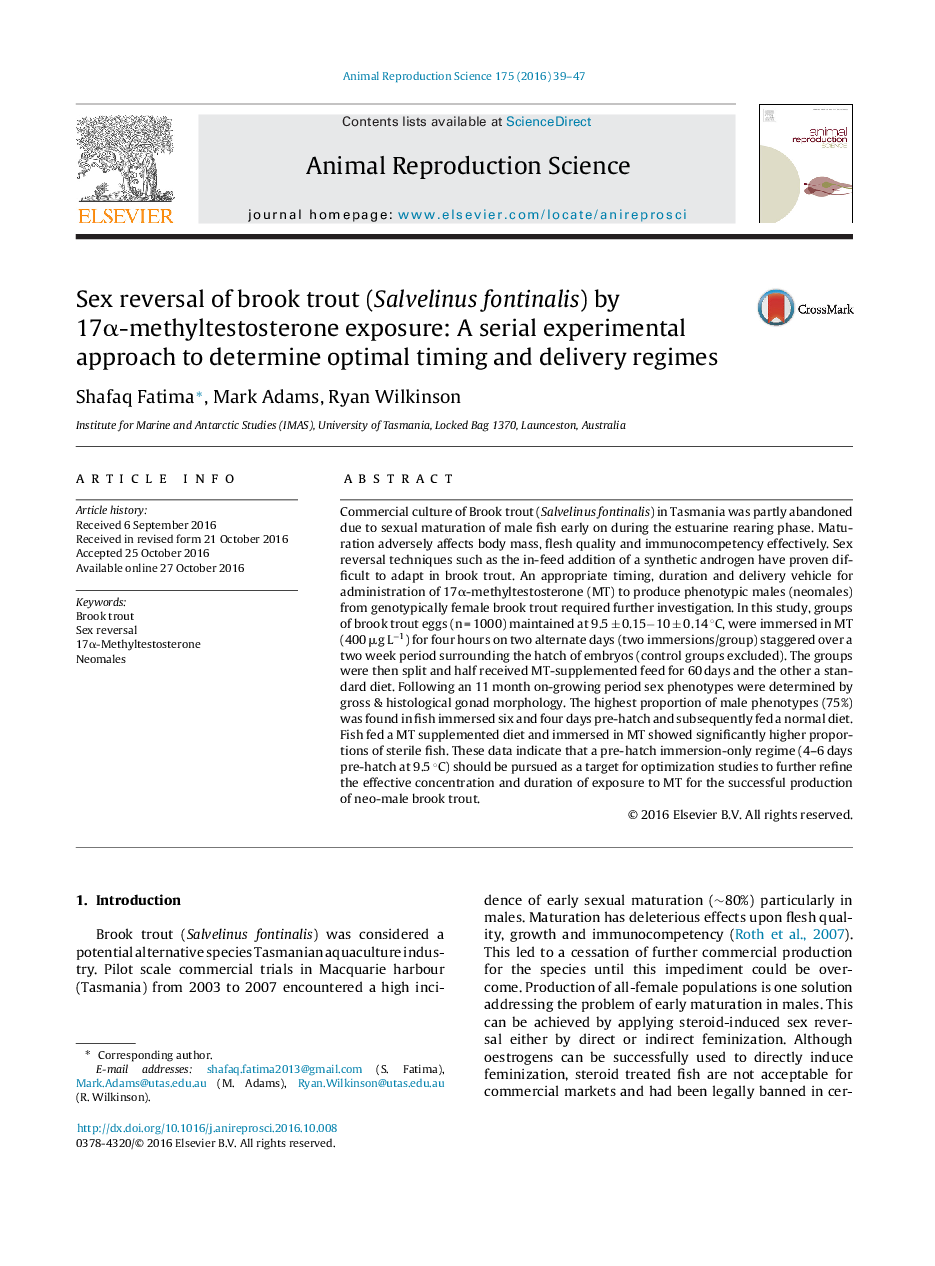| کد مقاله | کد نشریه | سال انتشار | مقاله انگلیسی | نسخه تمام متن |
|---|---|---|---|---|
| 5520321 | 1544702 | 2016 | 9 صفحه PDF | دانلود رایگان |

- Masculinization of brook trout mixed sex population was achieved by application of immersion, dietary and combination (both immersion and dietary) treatments.
- Immersion treatment in MT (400 μg L-1) was given for four hours on two alternate days staggered over a two week period (pre-hatch, hatch and post-hatch stages).
- Immersed groups were then split and half received MT-supplemented feed for 60 days and the other a standard diet.
- Following an 11 month on-growing period, histological study of gonads was performed to identify the sex.
- The highest proportion of male phenotypes (75%) was found in fish immersed six and four days pre-hatch and subsequently fed a normal diet.
Commercial culture of Brook trout (Salvelinus fontinalis) in Tasmania was partly abandoned due to sexual maturation of male fish early on during the estuarine rearing phase. Maturation adversely affects body mass, flesh quality and immunocompetency effectively. Sex reversal techniques such as the in-feed addition of a synthetic androgen have proven difficult to adapt in brook trout. An appropriate timing, duration and delivery vehicle for administration of 17α-methyltestosterone (MT) to produce phenotypic males (neomales) from genotypically female brook trout required further investigation. In this study, groups of brook trout eggs (n = 1000) maintained at 9.5 ± 0.15â10 ± 0.14 °C, were immersed in MT (400 μg Lâ1) for four hours on two alternate days (two immersions/group) staggered over a two week period surrounding the hatch of embryos (control groups excluded). The groups were then split and half received MT-supplemented feed for 60 days and the other a standard diet. Following an 11 month on-growing period sex phenotypes were determined by gross & histological gonad morphology. The highest proportion of male phenotypes (75%) was found in fish immersed six and four days pre-hatch and subsequently fed a normal diet. Fish fed a MT supplemented diet and immersed in MT showed significantly higher proportions of sterile fish. These data indicate that a pre-hatch immersion-only regime (4-6 days pre-hatch at 9.5 °C) should be pursued as a target for optimization studies to further refine the effective concentration and duration of exposure to MT for the successful production of neo-male brook trout.
Journal: Animal Reproduction Science - Volume 175, December 2016, Pages 39-47